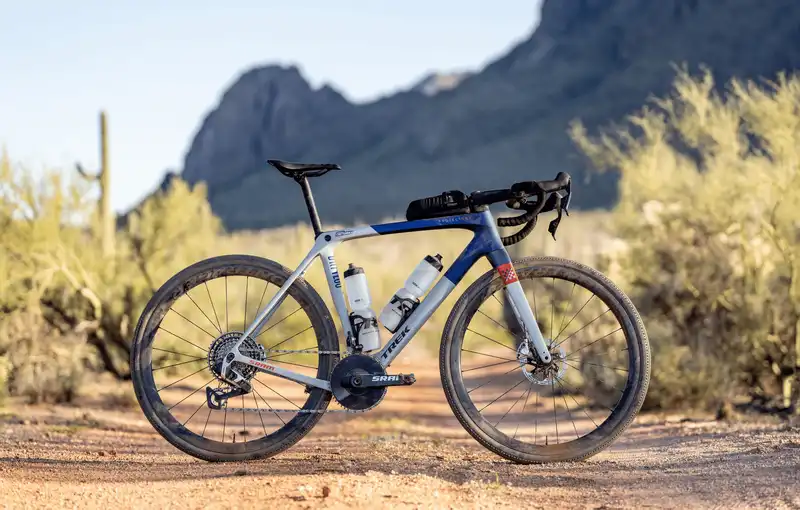Trek has announced the arrival of an all-new gravel race bike called the Checkmate SLR, in addition to an update to the existing Checkpoint SL.
The Checkmate SLR takes many design cues from the brand's aero road bike, the Madone, appropriating the Madone's aero cockpit and using the same full system foil approach.
On the other hand, the Checkpoint SL, released as a gravel race bike, heads in a more adventurous direction in gravel. In addition to more relaxed geometry, it has been updated with gravel endurance in mind, with many mounting points and room for 50mm tires.
The Checkmate SLR and Checkpoint SL feature Trek's IsoSpeed technology, which reduces the effects of high-frequency vibration while riding. Along with the new bikes, Trek also introduced a collection of bikepacking bags for both the Checkmate SLR and Checkpoint SL. The range includes a top tube bag, a frame bag, and an aero triangle bag that fits just behind the head tube. [...] [...] [...] [...] [...] [...] [...] [...] [...] [...] [...] [...] [...] [...] [...] [...] [...] [...] This is achieved by using the brand's premium material, OCLV 800 series carbon fiber.
Weight is not the only focus of Checkmate. Aerodynamics are also a focus. Upon inspection, one can see how much the Checkmate borrows from its road cousin, the Madone SLR. The Checkmate uses Trek's Full System Foil Technology, first used on the eighth-generation Madone, which was introduced prior to this year's Tour de France. The concept is to create an aerodynamic package that includes the rider, the bottle, and other equipment, rather than looking at the bike in isolation.
When this new aero optimized frameset is combined with the bike's “gravel race” geometry that puts the rider in a “more aggressive and efficient riding position,” the total system is significantly more aerodynamic than the Checkpoint SLR's successor improvements.
According to Trek's testing, a Checkmate SLR at 200 watts on an unbound 200 can complete the course 5 minutes 54 seconds faster. Of course, if speed and power exceed this test wattage, the benefit is even greater. [...] [...] [...] [...] [...] [...] [...]


Comments